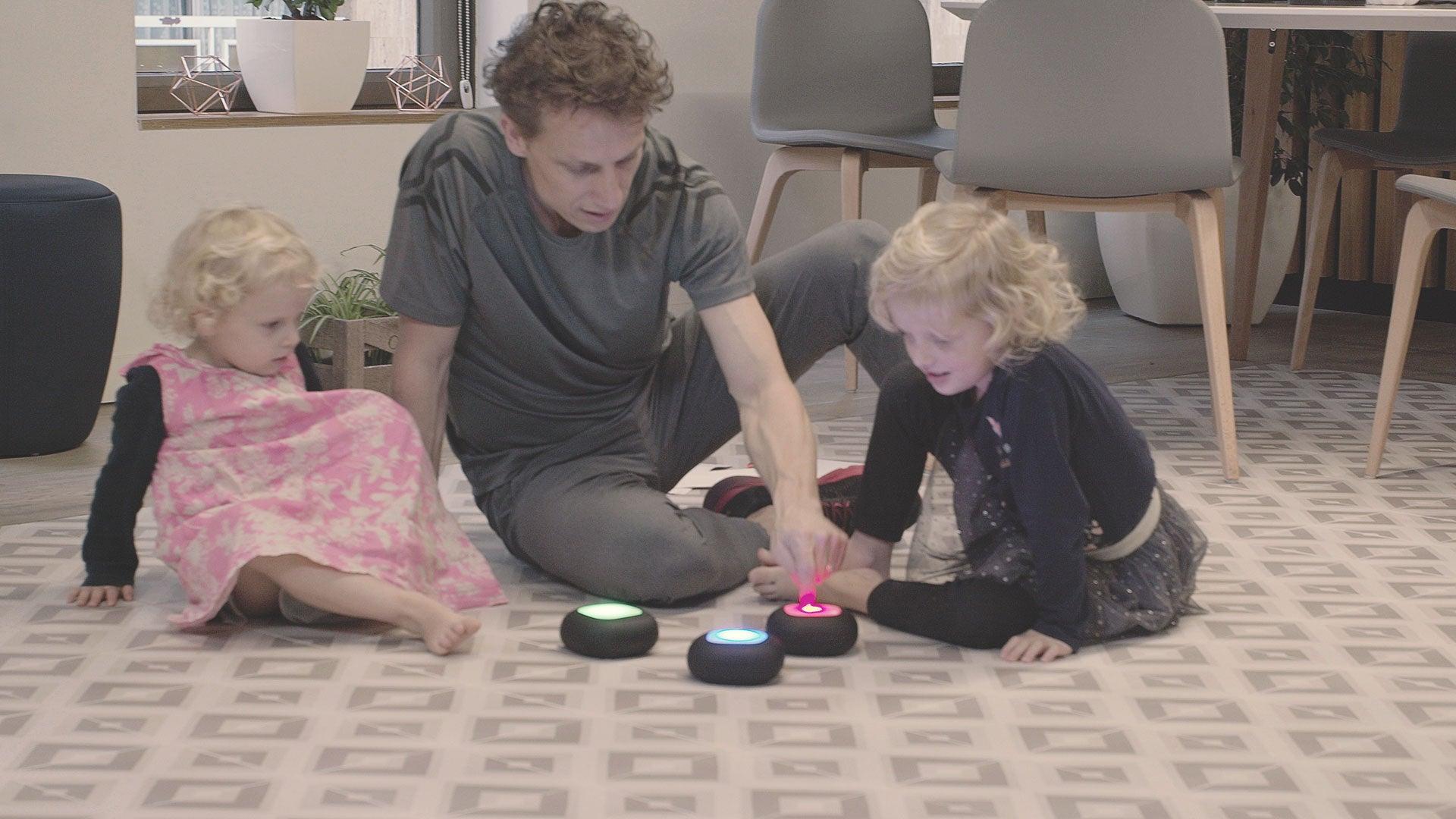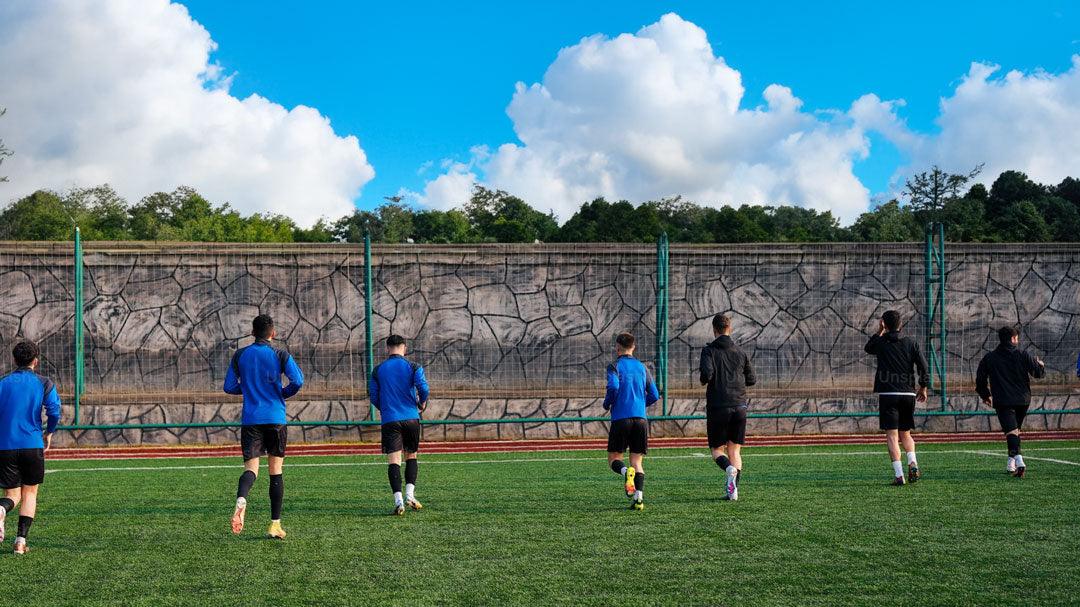Einführung in die grundlegende Bewegungsentwicklung: Die Grundlagen verstehen
Die grundlegende Bewegungsentwicklung ist der Grundstein für körperliches Wachstum und den Erwerb motorischer Fähigkeiten bei Kindern und Jugendlichen. Sie umfasst die Koordination einfacher und komplexer Bewegungen und ist ein zentraler Aspekt der menschlichen Entwicklung. In diesem Artikel untersuchen wir die Bedeutung dieser Phase, die sich von der Grundschule bis zur Pubertät erstreckt, und wie Innovationen wie die Reaktionslichter von A-Champs ROX diese entscheidende Phase unterstützen können.
Frühe Bewegungsfähigkeiten: Die fünf wichtigsten Gangarten für Kleinkinder
Im Alter von 6 bis 14 Jahren beherrschen Kinder typischerweise fünf Gangarten – Gehen, Laufen, Galoppieren, Hüpfen und Springen –, die für die aufrechte Fortbewegung entscheidend sind. Diese Gangarten sind nicht nur Bewegungen, sondern stellen Meilensteine in der kindlichen Entwicklung dar. Die meisten 4-Jährigen beherrschen diese Fähigkeiten bereits, wobei das Springen gelegentlich Schwierigkeiten bereitet.
Die Vernetzung der Bewegungsfähigkeiten: Wie verschiedene Fähigkeiten zusammenhängen und fortschreiten
Die Beherrschung einer Bewegungsfertigkeit bedeutet nicht zwangsläufig auch die Beherrschung einer anderen, doch die Fertigkeiten sind miteinander verbunden. Die Entwicklung von Gleichgewicht und bilateraler Koordination ist die Grundlage für die Entwicklung dieser Fertigkeiten und verdeutlicht die Komplexität und gegenseitige Abhängigkeit der Bewegungsentwicklung.
Vom Allgemeinen zum Speziellen: Die Evolution der Bewegung
Laut Bailey und Macfadyen (2000) entwickeln sich die Bewegungen von Kindern von allgemeinen Mustern zu zunehmend spezialisierten Handlungen. Diese Entwicklung ist der Schlüssel zur Entwicklung spezifischer und verfeinerter Bewegungen, die für sportliche Fähigkeiten erforderlich sind.
Grundsteinlegung: 2 bis 7 Jahre
Im kritischen Alter zwischen 2 und 7 Jahren entwickeln Kinder die grundlegenden Fähigkeiten der Stabilität, Fortbewegung und Manipulation, die für zukünftige komplexe Fähigkeiten, einschließlich der für den Sport erforderlichen, von wesentlicher Bedeutung sind.
Das Zeitfenster: 8 bis 14 Jahre und sportliches Potenzial
Die Altersspanne von 8 bis 14 Jahren wird oft als goldenes Fenster angesehen, um den Grundstein für zukünftige sportliche Höchstleistungen zu legen. Diese Phase ist entscheidend für die Einführung eines grundlegenden motorischen Trainings, um das Potenzial jedes Einzelnen zu entfalten.
Individuelle Entwicklungszeitpläne: Erkennen einzigartiger Wachstumsmuster
Jedes Kind entwickelt sich in seinem eigenen Tempo, und grundlegende Bewegungsfähigkeiten bilden da keine Ausnahme. Das Bewusstsein, dass die Entwicklung nicht linear, sondern individuell verläuft, ist entscheidend, um Wachstum zu fördern, ohne unrealistische Erwartungen zu wecken.
Überblick über grundlegende Fähigkeiten: Stabilität, Fortbewegung und Manipulation
Die grundlegenden Fähigkeiten, die in die Kategorien Stabilität, Fortbewegung und Manipulation eingeteilt werden, bilden den Kern der körperlichen Entwicklung eines Kindes. Jede Kategorie umfasst Fähigkeiten, die dazu beitragen, dass sich ein Kind selbstbewusst und anmutig bewegen kann.
|
STABILITÄT |
FORTBEWEGUNG |
MANIPULATION |
||
|
Ausgleich Biegen Dehnen Verdrehen Drehen Schwingen Umgekehrte Stützen Körperrollen Landung/Stopp Ausweichen |
Gehen Läuft Springen Hüpfen Seilspringen Galoppieren Schiebetüren Springen Klettern |
Werfen Fangen Treten Einfangen Auffallend Volley Hüpfen Ball rollen Staken |
Kognitive und motorische Entwicklung: Fortgeschrittene Trainingsmethoden
Jüngste Fortschritte in der Trainingsmethodik haben das Verständnis der kognitiven motorischen Entwicklung vertieft. Diese Methoden bieten strukturierte Unterstützung während der entscheidenden Entwicklungsphase junger Menschen.
Bei A-Champs , wo wir die Reaktionslichter von ROX entwickelt haben, stellen wir Ihnen im Folgenden unsere Trainingsmethodik vor. Diese Methodik integriert sich perfekt in die Wissenschaft der grundlegenden Bewegung

Warum die grundlegende Bewegungsentwicklung so wichtig ist
Die Entwicklung grundlegender Bewegungen ist entscheidend für die allgemeine Gesundheit, körperliche Aktivität, Fitness und geistige Wachheit. Sie trägt auch maßgeblich dazu bei, Bewegungsmangel und Übergewicht entgegenzuwirken, die Motivation zu steigern und das Bewegungsbewusstsein zu stärken.
|
GESUNDHEITSBEZOGEN
|
|
LEISTUNGSBEZOGEN |
|
Herz-Kreislauf-Ausdauer Muskelkraft Muskelausdauer Flexibilität Körperzusammensetzung Verbesserter Bewegungsbereich Vision |
Auge-Hand-Fuß-Koordination Gleichgewicht Geschwindigkeit Beweglichkeit Leistung (Stärke x Geschwindigkeit) Beschleunigung Multidirektionale Bewegung Wahrnehmung |
Die Folgen von Bewegungsmangel: Fettleibigkeit und ihre Auswirkungen auf Kinder
Bewegungsmangel und Fettleibigkeit sind zunehmende Probleme mit schwerwiegenden Folgen für die Gesundheit von Kindern. Dieser Abschnitt befasst sich mit den alarmierenden Trends und der Bedeutung von Bewegung im Kampf gegen diese Probleme.
Belege: Die Vorteile körperlicher Aktivität
Regelmäßige körperliche Aktivität hat zahlreiche Vorteile, darunter Krankheitsprävention, Regulierung des Körpergewichts, Knochenwachstum und Muskelgewebeintegrität. Sie trägt auch zu besseren schulischen Leistungen, geistigem Wohlbefinden und Selbstwertgefühl bei.
Lernschwierigkeiten durch Bewegung bewältigen
Forschungsergebnisse deuten auf einen Zusammenhang zwischen spezifischen Lernschwierigkeiten wie Legasthenie und ADHS und motorischen Defiziten hin. Strukturierte Bewegungsprogramme sind eine praktische Antwort auf diese Herausforderungen.
Bekämpfung von Gesundheitsproblemen und Bewegungsmangel
Angesichts der steigenden Fettleibigkeitsraten in Großbritannien, Europa und Amerika ist es wichtiger denn je, grundlegende Bewegungsprogramme in das Leben junger Menschen zu integrieren. Solche Initiativen können beunruhigende Trends umkehren und eine gesündere, aktivere Generation fördern.
ROX Reaktionslichttraining: Integration von Technologie in die Bewegungsentwicklung
Die Integration von Technologien wie den Reaktionslichtern von ROX in die Bewegungsentwicklung kann das Trainingserlebnis verbessern. Dieser Abschnitt untersucht, wie solche Technologien im Sportunterricht effektiv eingesetzt werden können.
Nachfolgend wird die Auswirkung eines hochwertigen Grundbewegungsprogramms auf die Handschrift eines Kindes über einen bestimmten Zeitraum hinweg veranschaulicht.

Und dies ist eine zweite Handschrift 5 Monate nach einer Bewegungsintervention.

Die Gesundheits- und Fitnesskomponenten: Gesundheit und leistungsbezogene Fitness verstehen
Die Fitness eines Kindes umfasst sowohl gesundheitsbezogene als auch leistungsbezogene Komponenten. Das Erkennen dieser Komponenten hilft bei der Gestaltung





Hinterlasse einen Kommentar
Diese Website ist durch hCaptcha geschützt und es gelten die allgemeinen Geschäftsbedingungen und Datenschutzbestimmungen von hCaptcha.